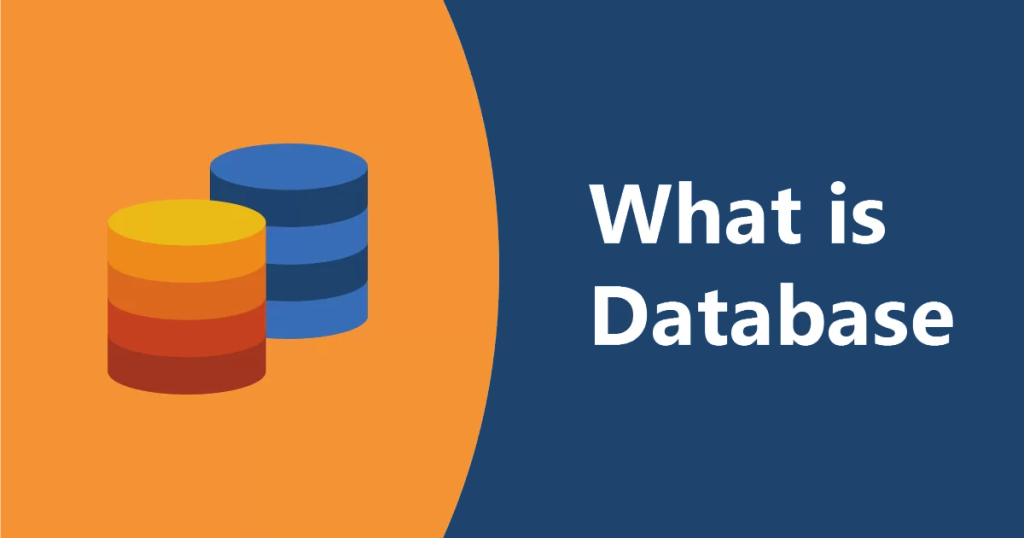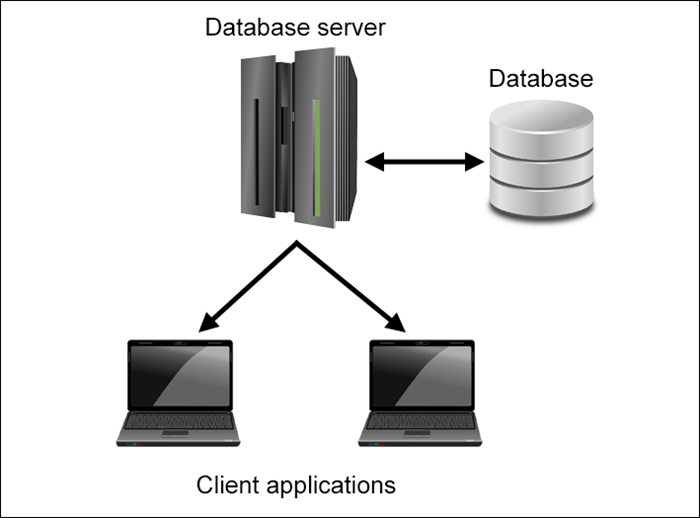Fundamental Tutorials of Database
What is Database?

A database is a collection of data that is stored in a structured way. It is a repository of information that can be accessed and managed by a computer program. Databases are used to store a wide variety of data, such as customer information, product inventory, and financial records. Databases are organized into tables, which are made up of rows and columns. Each row in a table represents a single record, and each column represents a single piece of data about that record. For example, a table of customer information might have columns for the customer’s name, address, and phone number.
Databases are managed by a database management system (DBMS). A DBMS is a software program that allows users to create, modify, and access data in a database.
The DBMS provides a number of features that make it easy to manage data, such as:
- Data security: The DBMS can be used to protect data from unauthorized access.
- Data integrity: The DBMS can be used to ensure that data is accurate and consistent.
- Data backup and recovery: The DBMS can be used to back up data and recover data in case of a disaster.
- Data sharing: The DBMS can be used to share data between different users and applications.
What is top use cases of Database?
Here are some of the top use cases of databases:
- Customer relationship management (CRM): Databases are used to store customer information, such as name, address, phone number, and purchase history. This information can be used to track customer interactions, target marketing campaigns, and provide personalized customer service.
- E-commerce: Databases are used to store product information, such as price, description, and inventory levels. This information can be used to power e-commerce websites and process orders.
- Content management systems (CMS): Databases are used to store website content, such as blog posts, articles, and images. This information can be easily managed and updated by users without needing to know how to code.
- Web applications: Databases are used to store data for a wide variety of web applications, such as social media platforms, online banking, and booking systems.
- Enterprise resource planning (ERP): Databases are used to store data for enterprise applications, such as accounting, inventory management, and supply chain management. This information can be used to make better business decisions.
- Scientific research: Databases are used to store data for scientific research, such as gene sequences, weather data, and financial market data. This information can be used to analyze trends and make predictions.
What are the features of Database?
Here are some of the most important features of databases:
- Data security: Databases can be used to protect data from unauthorized access. This is done through a variety of security mechanisms, such as user authentication, data encryption, and access control lists.
- Data integrity: Databases can be used to ensure that data is accurate and consistent. This is done through a variety of mechanisms, such as data validation, data redundancy, and transaction management.
- Data backup and recovery: Databases can be used to back up data and to recover data in case of a disaster. This is done through a variety of mechanisms, such as data replication, data mirroring, and data snapshots.
- Data sharing: Databases can be used to share data between different users and applications. This is done through a variety of mechanisms, such as data views, data federation, and data virtualization.
- Performance: Databases can be designed and tuned to provide high performance for a variety of workloads. This is done through a variety of mechanisms, such as indexing, caching, and query optimization.
- Scalability: Databases can be scaled to meet the needs of growing workloads. This is done through a variety of mechanisms, such as horizontal scaling, vertical scaling, and cloud computing.
- Reliability: Databases can be designed and implemented to be highly reliable. This is done through a variety of mechanisms, such as redundancy, failover, and disaster recovery.
What is the workflow of Database?
The workflow of a database is the process of storing, retrieving, and managing data in a database. The workflow typically consists of the following steps:
- Data modeling: The first step is to model the data that will be stored in the database. This involves identifying the entities, attributes, and relationships between the entities.
- Data definition: Once the data has been modeled, it is time to define the database schema. This involves creating the tables, columns, and constraints that will be used to store the data.
- Data loading: Once the schema has been defined, the data can be loaded into the database. This can be done manually or through an automated process.
- Data access: Once the data is in the database, it can be accessed by users and applications. This can be done through SQL queries or through an API.
- Data maintenance: The database needs to be maintained on a regular basis. This includes tasks such as backing up the data, optimizing the performance, and fixing errors.
- Data security: The database needs to be secure to protect the data from unauthorized access. This includes tasks such as setting permissions, encrypting the data, and monitoring for security breaches.
How Database Works & Architecture?

A database is a collection of data that is stored in a structured way. It is a repository of information that can be accessed and managed by a computer program. Databases are used to store a wide variety of data, such as customer information, product inventory, and financial records. Databases are organized into tables, which are made up of rows and columns. Each row in a table represents a single record, and each column represents a single piece of data about that record. For example, a table of customer information might have columns for the customer’s name, address, and phone number.
Databases are managed by a database management system (DBMS). A DBMS is a software program that allows users to create, modify, and access data in a database.
The DBMS provides a number of features that make it easy to manage data, such as:
- Data security: The DBMS can be used to protect data from unauthorized access.
- Data integrity: The DBMS can be used to ensure that data is accurate and consistent.
- Data backup and recovery: The DBMS can be used to back up data and to recover data in case of a disaster.
- Data sharing: The DBMS can be used to share data between different users and applications.
How to Install and Configure Database?
Here are the steps on how to install and configure a database:
- Choose a database: There are many different databases available, such as MySQL, PostgreSQL, and Oracle. Each database has its own strengths and weaknesses. You need to choose a database that is appropriate for your needs.
- Install the database: Once you have chosen a database, you need to install it on your server. The installation process will vary depending on the database that you are using.
- Configure the database: Once the database is installed, you need to configure it. This includes setting the database name, the username, and the password. You may also need to configure the database for specific features, such as replication or clustering.
- Create a database user: You need to create a database user for each user who will be accessing the database. The database user will have a username and a password. You can also specify the permissions that the database user will have.
- Create a database schema: The database schema is the blueprint for the database. It defines the tables, columns, and relationships in the database. You can create the database schema using a graphical tool or by writing SQL statements.
- Load data into the database: Once the database schema is created, you can load data into the database. You can load data manually or by using a script.
- Test the database: Once the database is configured and loaded with data, you need to test it to make sure that it is working properly. You can test the database by running queries and by trying to access the database from different applications.
[…] Fundamental Tutorials of Database […]